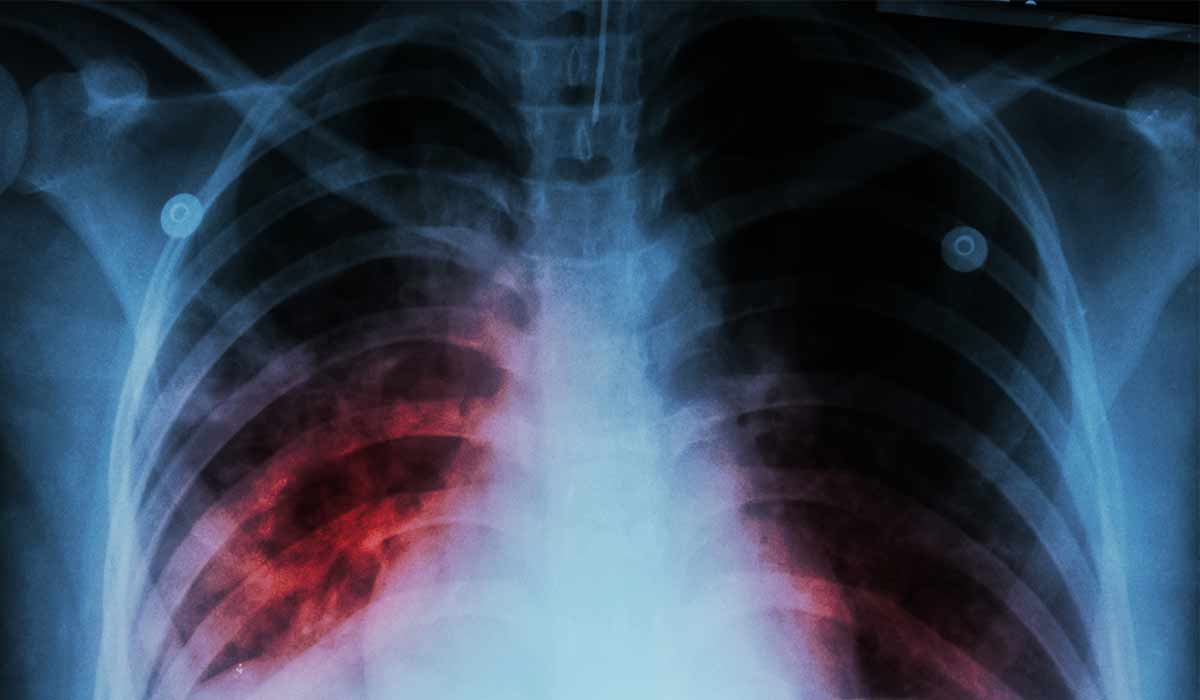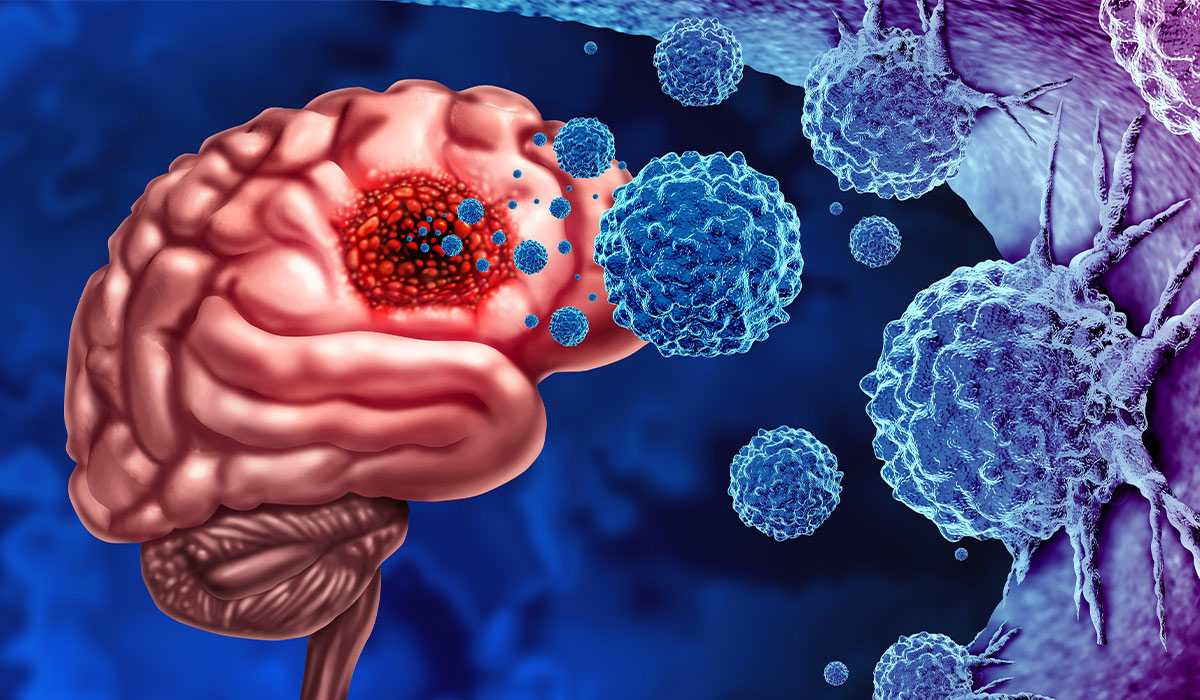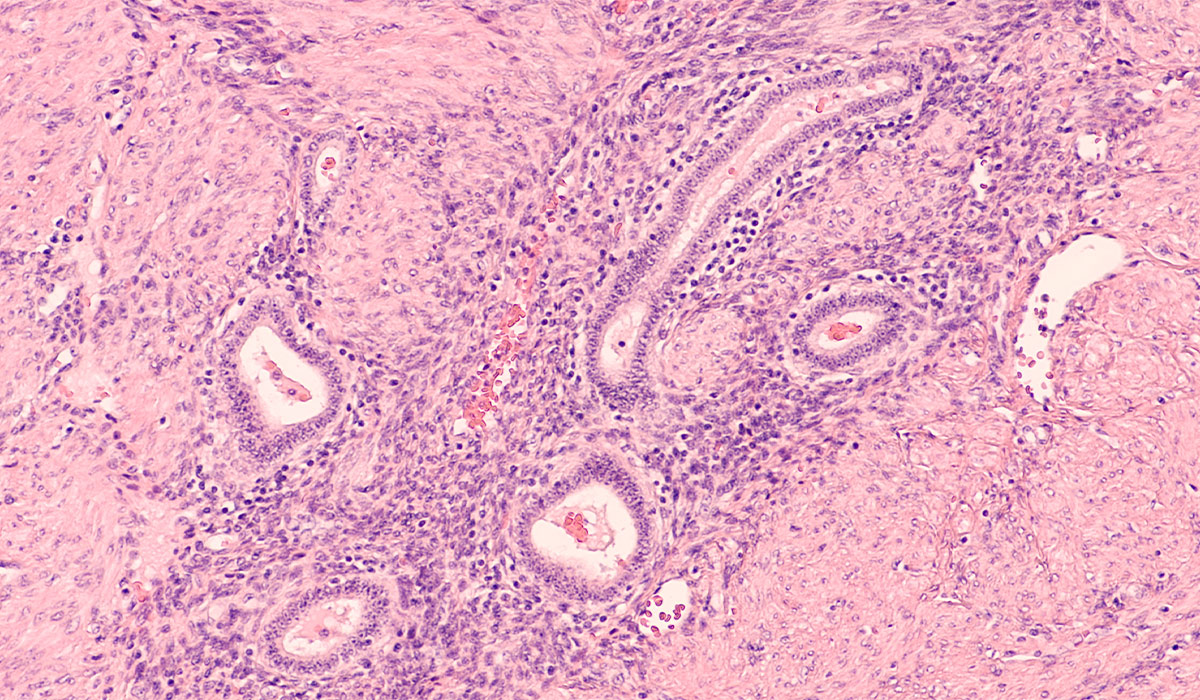A hematoma is a condition in which blood is poured outside the blood vessels. The accumulation of blood within the tissues due to a break in the continuity of blood vessels may be visible as a characteristic lesion on the skin. Hematomas can form on almost any part of the body. The cause of a hematoma is most often trauma, especially in people with a predisposition to bleeding. Certain diseases and specific conditions can increase the risk of hematoma formation.

Hematomas can also form due to damaged or weakened blood vessels. There are many types of hematoma, depending on where the bleeding occurs. Depending on the location and size of the hematoma, signs may vary. Diagnosis relies mainly on physical examination. For more minor, asymptomatic hematomas, the doctor may recommend regular observation, as these lesions often disappear independently. Sometimes, different treatment options are necessary.
A hematoma is used for conditions when accumulated blood![]() causes a large blood vessel to leak. A subcutaneous hemorrhage in healthy people should not be a cause for concern, but it is worth vigilance. This type of affliction can have various causes. Risk factors for hematomas include:
causes a large blood vessel to leak. A subcutaneous hemorrhage in healthy people should not be a cause for concern, but it is worth vigilance. This type of affliction can have various causes. Risk factors for hematomas include:
Most often, bruises and hematomas result from harmless or severe injuries. Trauma can result from a fall from a height, a blow, or prolonged pressure on tissues. Any physical activity carries the risk of injury. However, injury can also result from a severe car accident or other dangerous situation. The most hazardous are head injuries that lead to displacement of the brain in the skull. Then, a hematoma forms in the brain, a severe condition.
Some people may have a greater tendency to develop hematomas and bruises on the body. This may be related to the condition of the circulatory system. The excessive occurrence of subcutaneous hematomas is due to a decrease in the number of platelets. Various vitamins and minerals influence the condition of the blood, so improper diet or malabsorption can contribute to a higher incidence of hematomas. Vitamin B12, folic acid, and iron deficiencies are essential. Hematomas can also form due to weakened blood vessels. Vitamin C is necessary for the typical structure of blood vessels.
Unfortunately, hematoma should be a cause for concern because it may be associated with a disease. This is especially true if bruises and hematomas occur frequently, even with minor injuries. Certain diseases and specific conditions can increase the fragility of blood vessels. Blood clotting disorders that result from congenital diseases such as hemophilia can also be the cause. The excessive occurrence of subcutaneous hematomas is also due to a decrease in the number of platelets. The most serious cause of impaired blood components is leukemia and cancer.

In some cases, the cause of frequent hematomas is medications taken that contribute to a reduction in platelet count. Such medications include anticoagulants![]() , which increase the risk of unexpected bleeding. Bleeding after anticoagulant treatment is a common side effect. If this happens, consult your doctor, as it may be necessary to discontinue the drug. While hematomas resulting from trauma can occur in patients of all demographic groups, spontaneous hematomas are much more common in seniors
, which increase the risk of unexpected bleeding. Bleeding after anticoagulant treatment is a common side effect. If this happens, consult your doctor, as it may be necessary to discontinue the drug. While hematomas resulting from trauma can occur in patients of all demographic groups, spontaneous hematomas are much more common in seniors![]() who are treated with anticoagulants.
who are treated with anticoagulants.
Hematomas also occur as a result of surgical procedures of various types. In such situations, they are the body's natural response to the invasive action of the necessary surgery. This symptom should not be alarming unless it heralds post-operative complications. An early postoperative complication may be just a hematoma in the surgical wound. It can form due to blood clotting disorders, inadequate hemostasis, or tightening of the wound area. Doctors should observe such complications, as they may require special medical measures.
A hematoma is an accumulation of blood in an extravascular space; its name depends on where the blood accumulates. Since hematomas can occur anywhere on the body, there are many types. Hematomas can form on the skin, connective tissues, muscles, organs, and bones. Hematomas are formed in extravascular areas near bleeding blood vessels with an area that allows blood to pool. Types of hematomas include:
The first category that describes the type of hematoma is the subcutaneous type, which is unrelated to a specific site on the body. A subcutaneous hematoma refers to a hemorrhage of blood under the skin, creating a characteristic discoloration of the skin. Subcutaneous hematoma changes its color over time, which is associated with the successive stages of hemoglobin transformation. At first, the skin takes on a red color, which quickly becomes purple-pink, and after a few days, the hematoma begins to fade.

Muscle and intramuscular hematomas are bleeding within a group of muscles caused by the accumulation of blood and its clotting in the muscle. Muscle hematomas often occur in the abdominal region and are usually benign. However, in some cases, muscle hematomas can indicate a dangerous condition, so it is better to consult a specialist. Muscle hematoma is a condition that can cause myositis ossificans![]() . The term refers to a process within the muscle involving cartilage, bone, and fibroblast proliferation. It is a rare reaction secondary to traumatic muscle hematomas characterized by non-neoplastic heterotopic bone formation in skeletal muscles.
. The term refers to a process within the muscle involving cartilage, bone, and fibroblast proliferation. It is a rare reaction secondary to traumatic muscle hematomas characterized by non-neoplastic heterotopic bone formation in skeletal muscles.
Abdominal hematoma is another type of hematoma related to its location. The condition can develop in intra-abdominal![]() form or on the abdominal wall
form or on the abdominal wall![]() . Vascular damage can have various causes, including external abdominal trauma, post-operative injury, or intense spasms of the rectus muscles. In the case of intense spasms, this refers to activities such as a strong vomiting reflex or significant exertion. Abdominal wall hematoma is a rare condition, but it can be dangerous and life-threatening. In such cases, there are additional symptoms, such as abdominal pain.
. Vascular damage can have various causes, including external abdominal trauma, post-operative injury, or intense spasms of the rectus muscles. In the case of intense spasms, this refers to activities such as a strong vomiting reflex or significant exertion. Abdominal wall hematoma is a rare condition, but it can be dangerous and life-threatening. In such cases, there are additional symptoms, such as abdominal pain.
One can also distinguish between intrapleural![]() and extrapleural
and extrapleural![]() hematomas. Pleural hematoma is an accumulation of blood in the pleural cavity. A small hematoma usually gives no symptoms, but fluid collects in the pleural cavity in the case of a more severe injury resulting from a pleural hematoma. When the pleural cavity fills up, pressure is created in the lungs and various vessels. Such a condition can cause breathing problems and many other symptoms. When diagnosing a pleural hematoma, the hematocrit, or blood content of the fluid, is essential. Pleural hematoma occurs mainly in cases of mechanical trauma to the chest, such as rib fractures.
hematomas. Pleural hematoma is an accumulation of blood in the pleural cavity. A small hematoma usually gives no symptoms, but fluid collects in the pleural cavity in the case of a more severe injury resulting from a pleural hematoma. When the pleural cavity fills up, pressure is created in the lungs and various vessels. Such a condition can cause breathing problems and many other symptoms. When diagnosing a pleural hematoma, the hematocrit, or blood content of the fluid, is essential. Pleural hematoma occurs mainly in cases of mechanical trauma to the chest, such as rib fractures.

Intracranial hematomas are referred to as hemorrhages and include four subtypes depending on the bleeding site. Thus, epidural![]() , subarachnoid
, subarachnoid![]() , subdural
, subdural![]() , and interstitial
, and interstitial![]() hemorrhages are listed. Each type of intracranial hematoma is due to a different etiology, and the symptoms and prognosis also depend on the case. Intracranial hematomas usually result from head trauma. Hematomas in the brain are very dangerous to health and even life. Usually, the discomfort is chronic and builds up over weeks. Neurological symptoms such as dementia or epileptic seizures occur.
hemorrhages are listed. Each type of intracranial hematoma is due to a different etiology, and the symptoms and prognosis also depend on the case. Intracranial hematomas usually result from head trauma. Hematomas in the brain are very dangerous to health and even life. Usually, the discomfort is chronic and builds up over weeks. Neurological symptoms such as dementia or epileptic seizures occur.
Hematomas that are visible externally are subjected to physical examination. The size of the hematoma, the color of the skin, and the degree of soreness are assessed. The basis is to interview the patient and determine the specific cause of the hematoma. In cases of obvious trauma, diagnosis is more accessible than when the hematoma occurred spontaneously. At this stage, patients should report any complaints and diseases and medications that may affect blood clotting. In addition, tests may need to be performed, such as:

General blood tests can reveal a lot of helpful information regarding the hematoma. Among other things, the tests show the condition of the blood and its components, which is of great importance. Blood morphology allows early detection of many diseases that affect clotting abnormalities and other conditions.
Other indicators measured by blood tests include deficiencies that may indicate malabsorption or other similar causes of hematuria. Meanwhile, an indication of hemoglobin![]() and hematocrit levels can estimate whether there has been much blood loss. Blood testing is generally available in medical facilities and is an easy and basic procedure that is worth performing regularly to monitor health.
and hematocrit levels can estimate whether there has been much blood loss. Blood testing is generally available in medical facilities and is an easy and basic procedure that is worth performing regularly to monitor health.
Ultrasound detects any unwanted changes in internal organs, which can be crucial in diagnosing and evaluating a hematoma. This includes hematomas in the abdomen. The test is characterized by its non-invasiveness and general accessibility. Ultrasound has an extensive range of applications in diagnosing conditions. It is safe for pregnant patients and children, as it carries no exposure to ionizing radiation.
Computed tomography (CT) is a popular test that uses X-rays. With CT scans, a multilayered cross-section of a patient's body is possible, making it easier to access areas that are not visible. CT can helps diagnose intracranial hematomas, as it is used to detect brain lesions, tumors, and aneurysms. However, the use of X-rays carries certain risks. Therefore, doctors only refer to the test when it is essential.
MRI is another very accurate imaging test. MRI uses particular radio waves. This type of radiation affects the body placed in a magnetic field. This procedure makes it possible to obtain any cross-sectional images of the body, which is of great importance in diagnosing hematomas of various types. MRI examination is safer than X-rays. The intensity and energy of the magnetic field are strictly controlled, and the MRI examination can be repeated in rapid succession.

The choice of hematoma treatment depends on the intensity and location of the lesion. It is advisable to monitor the patient's condition for more minor, benign hematomas only because they resolve over time and the body recovers. Sometimes, painkillers are used when pain affects quality of life. However, in more severe cases of hematomas, specialized treatment is necessary. The doctor may recommend regular observation since these lesions often disappear spontaneously.
Subcutaneous or intramuscular hematomas may require compression dressings and medical bands. Such treatment minimizes bleeding at the hematoma site and its absorption. Physiotherapy![]() is often used to restore function after symptoms have resolved and prevent complications.
is often used to restore function after symptoms have resolved and prevent complications.
Sometimes, aspiration removes accumulated blood by puncturing and aspirating the contents with a needle and syringe. The hematoma site is disinfected before the procedure, and the entire procedure is performed under anesthesia, so it is not dangerous. In addition, aspiration of the hematoma is performed after ultrasound guidance, and a dressing is made after the procedure. However, it is worth mentioning that it can be difficult to undergo the aspiration procedure in many cases of hematoma. More often, small incisions and surgical procedures are performed.
In some cases, surgery may be necessary. Surgical removal of a hematoma depends on the type and location. This method is performed mainly when the hematoma is significant and puts pressure on surrounding structures. Different surgical procedures are selected by a specialist. The surgical removal of a hematoma can have varying degrees of invasiveness. Evacuation of hematomas is often performed under ultrasound guidance and carried out under local anesthesia.
A hematoma is a condition that describes the outpouring of blood outside the blood vessels. Its cause is often mechanical trauma, but other causes are also possible and usually involve a more serious condition. A hematoma can be visible as a characteristic lesion on the skin. Still, some hematomas form in areas that are not visible from the outside and are then more difficult to diagnose. There are very many types of hematomas depending on the location.
Hematomas can affect different parts of the body. The most severe type of hematoma is intracranial hematoma, a dangerous condition. Diagnosis includes a thorough interview with the patient about the hematoma and additional symptoms. A physical examination is also essential, and further tests are also possible. Treatment depends on the specific case of hematoma. Surgical removal of the lesion may be necessary.
Table of Contents

Pneumothorax is a condition that develops as a result of air entering the pleural cavity. What are the causes and… read more »

A bruise is a common injury that occurs when small blood vessels beneath the skin rupture and leak blood into… read more »

Atelectasis is a lung condition in which parts of the alveoli, tiny air sacks in the lung, lose air. When… read more »

Tuberculosis is an infectious disease caused by mycobacteria. There are many types of tuberculosis with varying symptoms. Learn it all… read more »

Glioblastoma is a brain cancer with a poor prognosis. Discover the first signs of the disease and the latest treatments.… read more »

Abdominal pain refers to discomfort or pain felt anywhere in the area between the chest and the pelvis, commonly known… read more »

A nosebleed, which doctors call epistaxis, is when blood comes from inside the nose. This can happen for many reasons,… read more »

Adenomyosis is a chronic disease that can significantly reduce a woman's quality of life and limit her fertility. Learn how… read more »

Vascular dementia can occur after a stroke or other incident. Learn the most important information to recognize early symptoms and… read more »